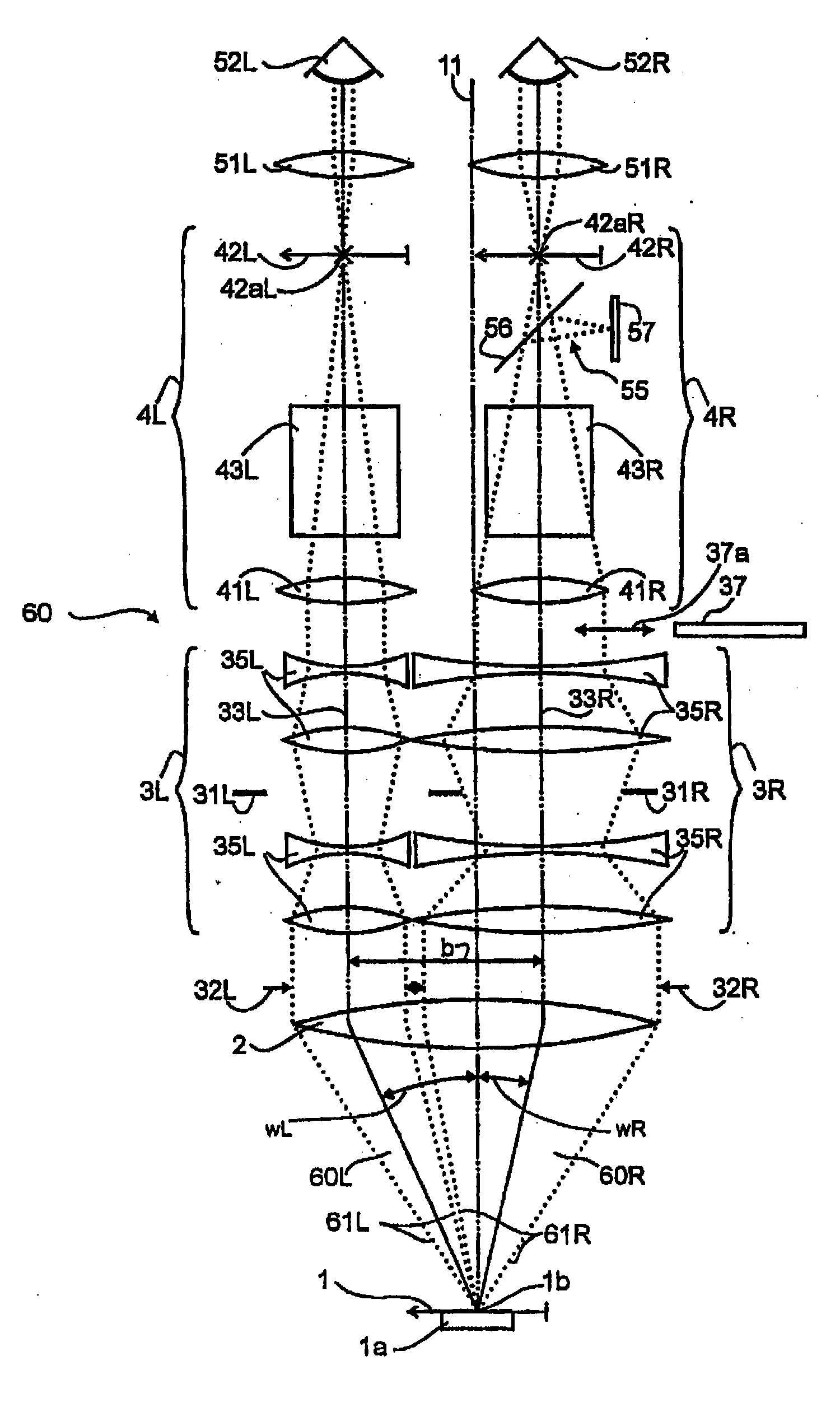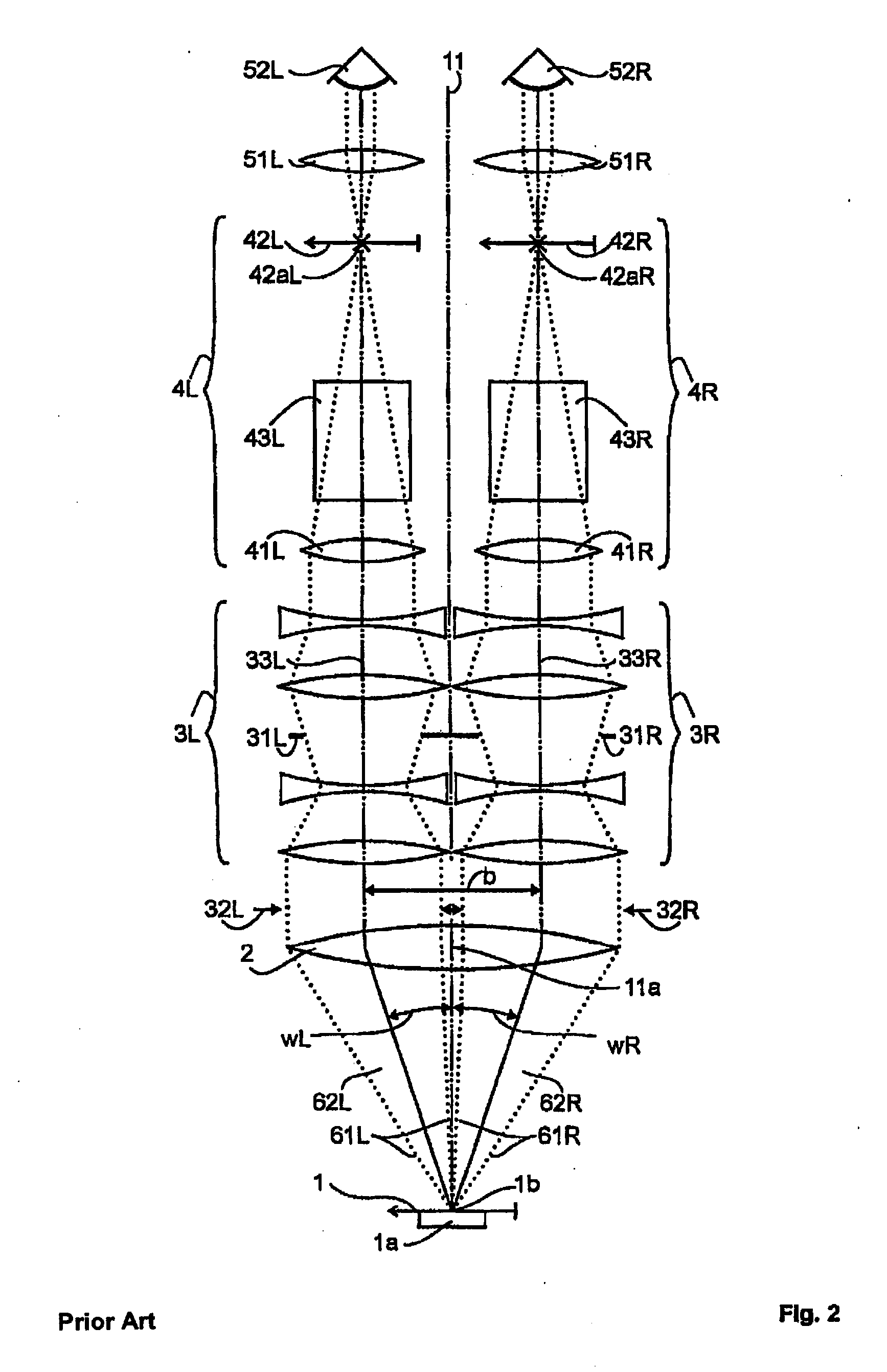Stereomicroscope
a technology of stereoscopic microscope and microscope, which is applied in the field of stereoscopic microscope, can solve the problems of excessive power required of the main objective, reducing the working distance, and limiting the number of apertures of the microscope of this type, and achieves the effect of increasing costs
- Summary
- Abstract
- Description
- Claims
- Application Information
AI Technical Summary
Benefits of technology
Problems solved by technology
Method used
Image
Examples
Embodiment Construction
[0048]FIG. 1 is a perspective view of a stereomicroscope 60 according to the prior art. The stereomicroscope 60 comprises a base 71, to which a focusing column 72 is secured. A focusing arm 73 is attached in a displaceable manner to the focusing column 72, which can be displaced via adjustment element 74 along the double arrow A-A. The stereomicroscope 60 has a binocular tube 65 and a zoom system (see FIG. 2). The zoom system can be adjusted with adjusting elements 78.
[0049]FIG. 2 is a schematic diagram of the optical design of a stereomicroscope of the telescope type according to the prior art (see DE 102 25 192 B4). The object plane 1 is in the front focal plane of the main objective 2. The object 1a to be investigated or observed is also located in the object plane. In the object plane 1 the object centre 1b is marked by the vertical line 11. The optical axis 11a of the objective 2 coincides with the vertical line 11. In the following the embodiment of the design of the optical ...
PUM
 Login to View More
Login to View More Abstract
Description
Claims
Application Information
 Login to View More
Login to View More - R&D
- Intellectual Property
- Life Sciences
- Materials
- Tech Scout
- Unparalleled Data Quality
- Higher Quality Content
- 60% Fewer Hallucinations
Browse by: Latest US Patents, China's latest patents, Technical Efficacy Thesaurus, Application Domain, Technology Topic, Popular Technical Reports.
© 2025 PatSnap. All rights reserved.Legal|Privacy policy|Modern Slavery Act Transparency Statement|Sitemap|About US| Contact US: help@patsnap.com



